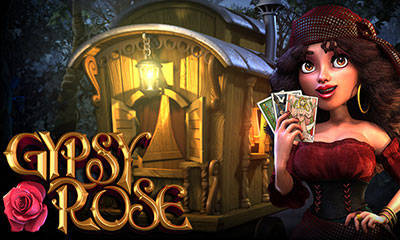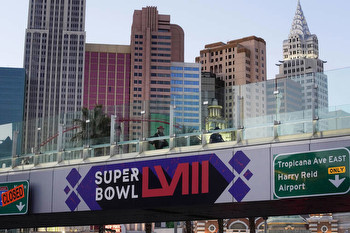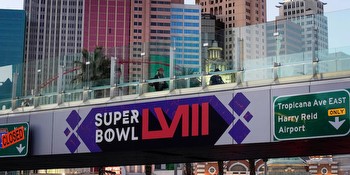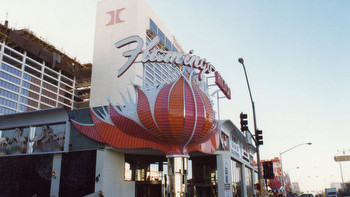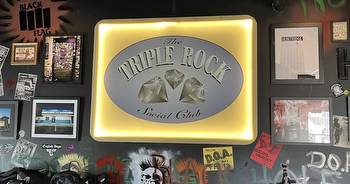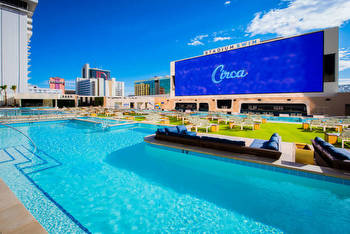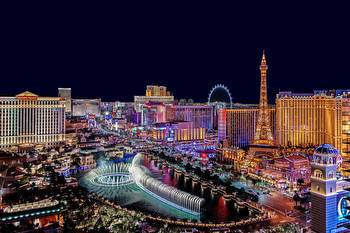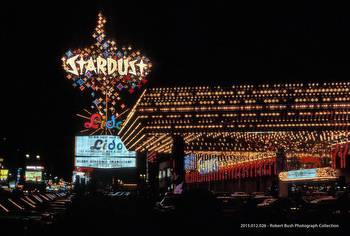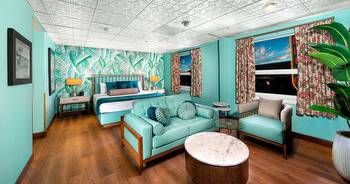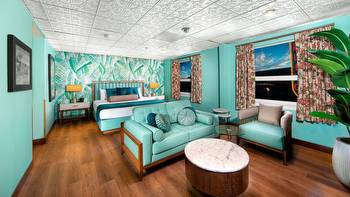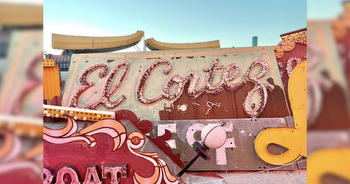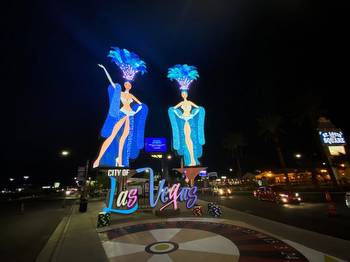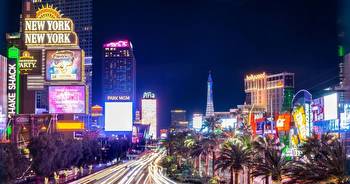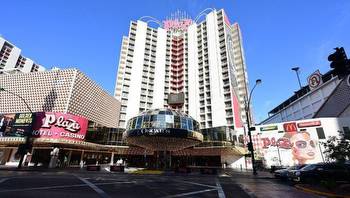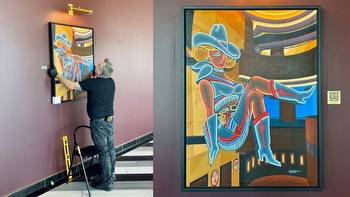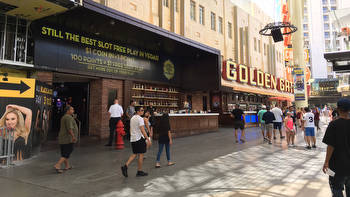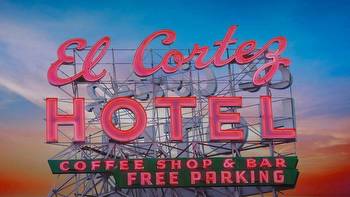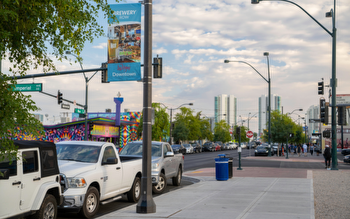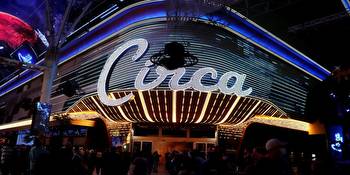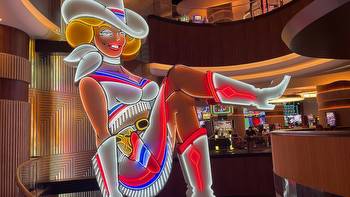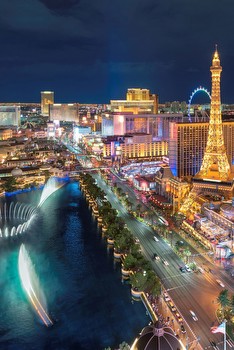Where Old Vegas is still alive today
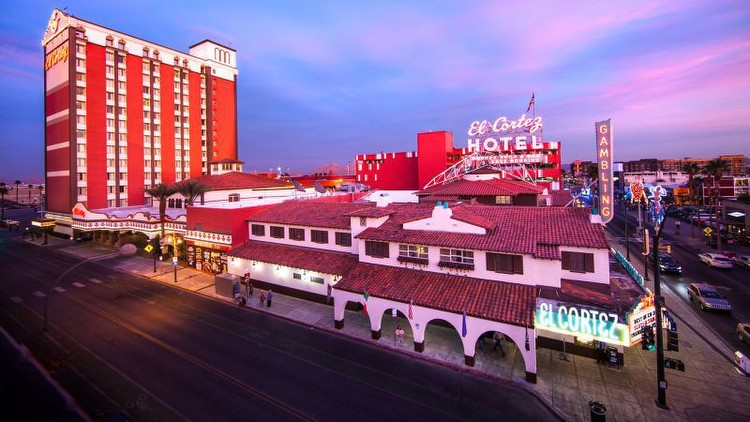
The CNN Original Series “Vegas: The Story of Sin City” showcases the heart and history of one of America’s most beloved and notorious cities in four immersive episodes. Tune in Sunday, March 3, at 10 p.m. ET/PT on CNN.
Leave it to Las Vegas to upstage Travis and Taylor, Usher and the most-watched Super Bowl ever.
Sure, last month’s game was exciting. And, yes, the celebrities were swoon-worthy. But, really, the biggest winner of the day was the host city itself.
Pundits couldn’t stop gushing about Vegas’ turn as host. On television, every cutaway seemed to capture the grandeur of a community that considers itself the entertainment capital of the world.
In one shot: dancing fountains in front of the Bellagio Las Vegas. In another: the half-scale replica of the Eiffel Tower in Paris. The cameras also couldn’t get enough of The Sphere, a state-of-the-art theater inside what is basically a spherical digital billboard.
These images were all representative of modern Vegas, a tourist destination that saw more than 40.8 million visitors in 2023 alone. But Las Vegas has a long and colorful history, too.
As Las Vegas continues to reinvent itself, there are still a handful of places around town where visitors can experience an authentic sense of yesteryear.
Most of these spots are in and around downtown. Here are some worth exploring:
Hotels and casinos
Perhaps the most obvious place to turn back the clock is the El Cortez Hotel & Casino, which opened on East Fremont Street in 1941 as downtown Las Vegas’ first major resort. It proudly promotes itself as the longest continuously operating casino in Las Vegas.
This property has undergone several renovations and additions over the years, but it retains the same façade unveiled in 1952 when it debuted a three-story neon sign that remains today. The building was named to the National Register of Historic Places in 2013.
Gaming pioneer Jackie Gaughan bought the property in 1963 and owned it until 2009, when he sold it to current owner Kenny Epstein. Since taking over, Epstein has worked to celebrate the past — he has preserved the pink-painted suite where Gaughan and his wife lived for 30 years, refurbished the original 47 flophouse-style rooms above the casino and outfitted a hallway with historic photos near the High Limit room on the gaming floor.
“We’re the last of the Mohicans here,” quipped Epstein, who is 82.
One of the most surprising throwbacks is the second-story barbershop, which guests access via a staircase near the craps pit. Barbers have been cutting hair there since the 1970s.
Another historic hotel is the Golden Gate Hotel & Casino, located at the west end of Fremont Street downtown.
Technically this property is 118 years old; it opened as the Hotel Nevada in 1906. Along the wa,y the hotel was the site of many local firsts, such as the first phone number in Las Vegas (1907) and the first shrimp cocktail (1959).
Recent renovations have modernized the property, but there are still some obvious connections to history.
Near the hotel lobby, for instance, you’ll find a row of vintage slot machines. Perhaps more impressively, in the hallway from the main casino floor to the high limit tables and slot machines, a tiny door reveals a section of original concrete wall. It is quite literally a window to the past.
Museums
Museums are obvious celebrations of the past, and in Las Vegas, these two museums have direct links to the Vegas of old.
First on the list: The Mob Museum, also located downtown.
The official name of this attraction is the National Museum of Organized Crime and Law Enforcement, and most of the permanent exhibits chronicle the rise and fall of the mafia in Las Vegas and across the country. If you’ve ever wanted to learn more about Vegas legends such as Bugsy Siegel or Meyer Lansky, this is the place to go.
In a case of delicious irony, the museum sits in the former US Post Office and Courthouse — the very same courthouse where in 1950 the US Senate Special Committee to Investigate Organized Crime in Interstate Commerce heard testimony in the courtroom on the second floor. These hearings ultimately exposed the underbelly of organized crime across America, particularly in Las Vegas.
The Mob Museum’s most popular “exhibit” is The Underground, a functioning speakeasy that makes its own moonshine in the basement. You do not need to buy a ticket for the museum to gain entry to the bar; check The Underground’s Instagram for the password of the day.
At the Neon Museum, Old Vegas is showcased in the form of neon signs.
This “museum” opened in 2012, and its collection got a jump start when YESCO, the local company behind many of Las Vegas’ signs, lent roughly 250 signs in an open-air lot named the Neon Boneyard. Today several of these still illuminate at night. Some of the signs date back to the 1930s, while others are more modern.
Among the current standouts: original signs from the Sahara, Riviera and Stardust resort casinos, as well as the giant neon guitar that stood in front of the Hard Rock Hotel & Casino until it became the Virgin Hotels Las Vegas during the Covid-19 pandemic.
Visitors must explore the Boneyard on a guided tour; tours last about an hour and start from the visitor center in the refurbished lobby of the La Concha motel on Las Vegas Boulevard north of downtown.
The museum also offers another experience, dubbed “Brilliant,” where different signs in a separate open-air lot are “reanimated” with projection technology at night.
Restaurants
While the food scene in modern Las Vegas is considered one of the best and most varied in America, there are still several restaurants in town with deep and vibrant connections to the past.
Not surprisingly, many of them are steakhouses where servers wear tuxedoes and Caesar salads are prepared tableside in carts.
The Golden Steer is the granddaddy of them all — it opened in 1958 and has operated continuously (though not in the same Sahara Avenue location) since then. This restaurant was a favorite spot of Frank Sinatra, Dean Martin, Sammy Davis Jr. and other members of the Las Vegas Rat Pack. Today the dining room is adorned with tufted leather banquettes named after some of these stars.
For an old-school Italian meal, the restaurant at the Italian American Club on Sahara Avenue east of Las Vegas Boulevard is quite a treat. Sure, the pastas, meat and fish dishes are tasty, but the history there is nourishing, too. Sinatra, a former member, was instrumental in getting the club built (he reportedly donated a Cadillac that fetched top dollar at auction in 1961), and the restaurant displays photos, letters and other mementos from the star. A hallway near the bathrooms is adorned with framed photos of other famous visitors from over the years.
Another throwback eatery: the circa-1973 Hugo’s Cellar, in the basement of the Four Queens Casino downtown. Hugo’s is romantic; every female guest gets a long-stemmed rose, and every table receives chocolate-dipped strawberries at the end of the meal. The restaurant also is famous for its flaming tableside dessert preparations.
No discussion of old-school Vegas eateries is complete with at least mentioning the Peppermill. This restaurant opened in 1972 and retains its disco-era vibe. If you go, check out the Fireside Lounge, which boasts sunken firepits and TVs with 1980s music videos on loop.
Other attractions
Several other sights and destinations around Las Vegas keep the city’s past alive in this modern age.
Atomic Liquors, for instance, a dive bar on Fremont Street east of the El Cortez, received the city’s first official liquor license when it opened in 1952 — license No. 00001. Rumor has it that patrons used to take their drinks to the roof and look for mushroom clouds rising from atomic testing sites in the desert. The bar also reportedly was a favorite spot of Barbara Streisand’s in the 1960s.
Gamblers love the original, coin-operated Sigma Derby, a unique slot machine on the second floor of The D Las Vegas downtown. The circa-1980s machine was built to replicate a horse track — five mechanical horses race around a circle, and a winner emerges randomly every time. Players use old-school quarters to bet on which horse will win; sometimes they’ll get odds as favorable as 200 to 1. At one point every casino in Las Vegas had a machine like this one; today this is the only coin-operated iteration left.
Inside Circa Las Vegas, visitors flock to glimpse Vegas Vickie, a 25-foot-tall neon cowgirl who overlooks a lively bar and the main casino floor. Vickie originally appeared outside on Fremont Street in 1980 and became a landmark virtually overnight. Circa owner Derek Stevens acquired her in 2016, paid to have her refurbished and gave her new life when the casino opened in late 2020.
(Vickie’s boyfriend, a 25-foot-tall neon cowboy named Vegas Vic, still hangs outside looking over the Fremont Street Experience today.)
Finally, the most recognizable throwback to Old Vegas might be the neon “Welcome to Fabulous Las Vegas” sign at the south end of the Las Vegas Strip near Mandalay Bay Resort & Casino.
Betty Willis designed the sign back in 1959, and YESCO owns it today. It was added to the National Register of Historic Places in 2009.
In recent years, the sign has become one of the most popular spots in all of Las Vegas for visitors to take selfies; there’s a parking lot just south of the sign and rideshares and taxis make regular drop-offs there.
It’s not uncommon for guests to queue up for a chance to pose in front of this icon. To some, celebrating Old Vegas is still worth the wait.







